
Your Spring Garden Checklist
Peak gardening season is officially upon us. Here’s what to plant, tend, grow, and maintain no matter where you are in the West.
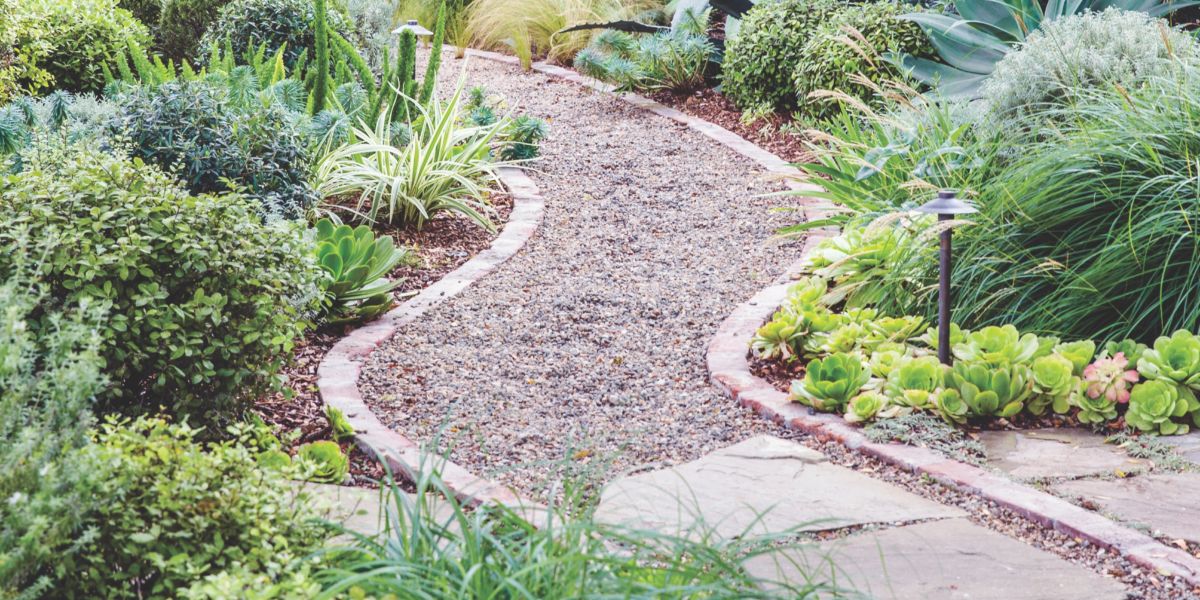
We only recommend things we love. If you buy something through our site, we might earn a commission
What should you be planting now? How should you protect your new spring shoots? Is there really anything you can do about pests? All this and more is covered in our region-by-region spring gardening checklist.
General Spring Gardening Tips
Rocky Mountain Region
Northern California
Northwest
Southern California
Southwest
All Regions
Plant
Place a big pot of basil right outside the kitchen door for convenient picking.
Site heat-loving vegetables carefully. All need full sun. Put tall growers (pole beans, corn, tomatoes, etc.) on the north side of shorter varieties (such as cucumber, eggplants, melons, peppers, and squash) so they won’t shade them out.
Maintain
Before they set seed, till in any cover crops you planted in your vegetable garden last fall.
Learn to vermicompost (wormbox compost). Boxes are easy to make and maintain, and the finished product—castings—serves as fertilizer for your garden. Learn more at calrecycle.ca.gov.
For easiest removal, hoe weeds in early morning the day after watering.
Protect
Harden off nursery plants that were grown indoors by placing them in a protected area, such as a covered patio, for a week or two. Cover with an old sheet at night to help them acclimate to the outdoors.
Fill a glazed pot saucer at least 12 inches wide and 2 inches deep with water. Place it under a shrub or tree to protect birds from predators.
Carefully collect and destroy all foliage affected by peach leaf curl or other maladies. Don’t compost these leaves or use them as mulch, as this will spread disease.
Check for birds’ nests before pruning shrubs and trees; leave them alone until eggs have hatched and baby birds are out of the nest.
Use plastic baskets from cherry tomatoes or strawberries to protect newly sprouted seedlings from birds. By the time the seedlings have grown tall enough to reach through the tops of the baskets, they are no longer as tender as the birds prefer.
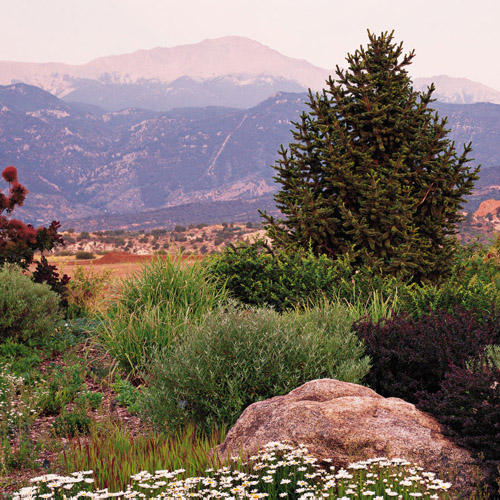
Rocky Mountains
Plant
Oriental and trumpet lilies brighten the night with blooms that glow in the dark, perfume the air, and attract pollinating moths. White selections like ‘Black Dragon,’ ‘Casa Blanca,’ ‘Proud Bride,’ and ‘Serene Angel’ stand out in dim light. Place in pots or fertile beds in full sun or partial shade.
Attract pollinators to the yard by planting a variety of perennial flowers. Favorites include aster, coreopsis, false indigo, Mexican hat, penstemon, purple coneflower, rudbeckia, and yarrow.
Start seeds of Idaho fescue (Festuca idahoensis), a tufted bunchgrass that’s perfect for dry meadows and rock gardens. Available from seedstrust.com.
Grow potatoes in Smart Pot fabric containers (smartpots.com) one-third full of potting soil amended with a balanced fertilizer. Cut seed potatoes into pieces (ensure each has two eyes) and bury 2 inches deep. As stems grow, gradually add more soil until the bag is full. Keep evenly moist but not soggy, and spray with liquid kelp every two weeks until flowers appear.
Maintain
Aerate your lawn, leaving the plugs in place to decompose.
Prune roses by cutting canes to just above a fat green bud that faces outward.
Water and turn your compost pile every time you add 2 to 3 inches of material.
Pull seedlings of Canada thistle, a tenacious weed, before it gets established. Watch for rosettes with sharp spines that pop up over winter. Dig them out, using care to get the entire taproot, which can regrow if broken off.
Protect
Hang yellow jacket traps in out of-the-way places to attract queens as they emerge from winter hibernation—before they build new nests.
If rabbits are eating your flowers, try growing blooms they don’t like, including catmint, penstemon, prairie zinnia, purple prairie clover, sedum, and yarrow. These flowers are also drought-tolerant.
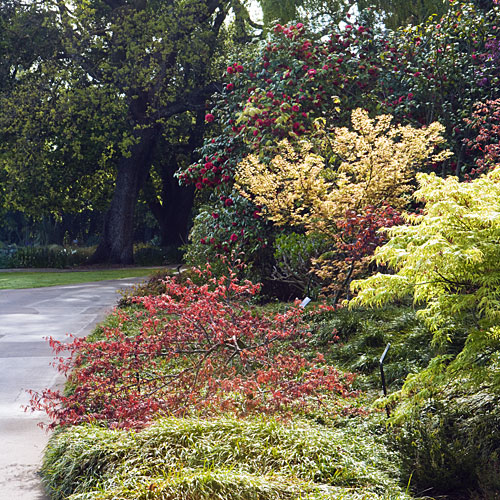
Northern California
Plant
Start cosmos, sunflower, and zinnia from seed. All are easy to grow, make nice cut flowers, and attract beneficial insects.
Plant tomatoes outside once daytime and nighttime temperatures stay above 55°.
Early in April, sow seeds of cool season veggies such as carrots, radishes, spinach, and Swiss chard. Late in the month, sow seeds of warm-season crops such as beans, corn, and squash.
Soften rock walls by planting creeping thyme, nasturtium, and sedum in spaces between the stones. Push a handful of soil into each space, then tuck in plants.
Harvest
Establish a twice-weekly harvest schedule to keep herbs and vegetables growing vigorously. Pick pea pods as soon as they’re plump; pull radishes from the ground as they fatten up; and regularly pinch leaves off basil, mint, and parsley.
Maintain
Mow the lawn when it’s dry, setting your mower at ¾ inch for Bermuda grass and 2 inches for fescues; leave clippings where they fall to fertilize the lawn.
Fertilize tomato plants weekly with a diluted solution of organic fish emulsion.
Thin out clusters of marble-size fruit on apple, apricot, nectarine, and peach trees. Gently twist them off, leaving 4 to 6 inches.
Collect seeds from annual flowers that have finished blooming, such as bachelor’s button, chamomile, cosmos, love-in-a-mist, nasturtium, and sweet peas. Allow them to dry, stash in labeled envelopes, and sow next fall.
Protect
Keep deer out of the garden by adding plants they ignore, such as Erigeron karvinskianus, ‘Moonshine’ yarrow, Russian sage (Perovskia), santolina, and Spanish and English lavender.
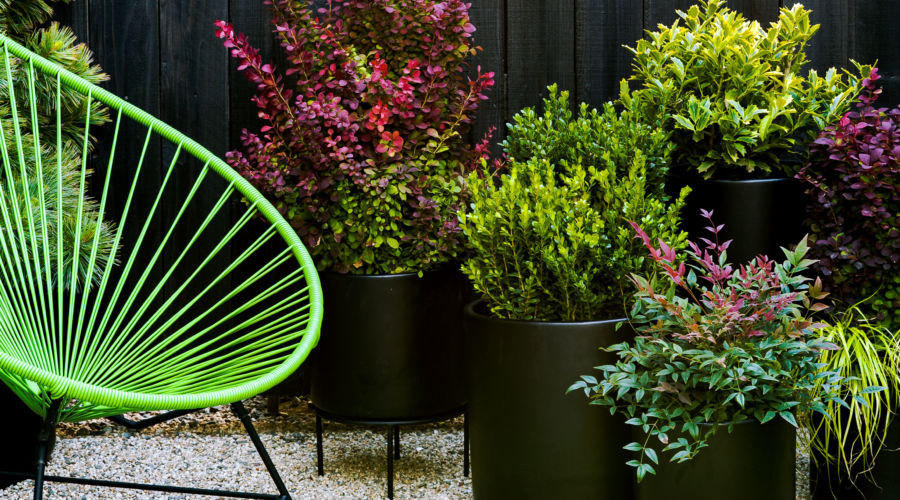
Northwest
Plant
Plant seedlings of broccoli, cabbage, cauliflower, kale, kohlrabi, lettuce, spinach, and Swiss chard. Sow seeds of carrots, peas, seed potatoes, and radishes; give them weed-free, well-amended soil.
Plant hardy olive trees, such as ‘Arbequina’ and ‘Leccino,’ west of the Cascades. Give them good drainage and sunny south exposure.
Plant cool-season flowers early in April and warm-season varieties later in the month. For intense color in a container, try the red Calibrachoa ‘Pomegranate Punch’ or the white-and-yellow ‘Lemon Slice.’
Plant permanent landscape favorites, including cherries, crabapples, dogwoods, lilacs, rhododendrons, and roses. Among climbers, check out fiveleaf akebia, clematis, climbing hydrangea, honeysuckle, passion vine,
and wisteria.
Maintain
While soil is cool, give vegetables and flowers a quick boost with organic liquid fertilizer, or apply bloodmeal—it has both quick- and slow-release properties.
Mow lawns often enough that you never have to cut off more than a third of the blade at once.
As daffodils and other spring flowering bulbs finish blooming, prune out spent flowers. Leave the foliage in place until it’s completely brown, so it can send nutrients back down to the bulbs.
Raspberries spread by runners, often far from mother plants. If they’ve spread to unwanted areas, dig them out, including the underground runners that produced them.
Protect
Aphid populations explode on new growth. Blast them off with a jet of water every week or so.
Slugs do maximum damage in spring by mowing down tender seedlings as they emerge. Bait for them or kill them as you see them (they’re easy to spot in damp weather or after you water).
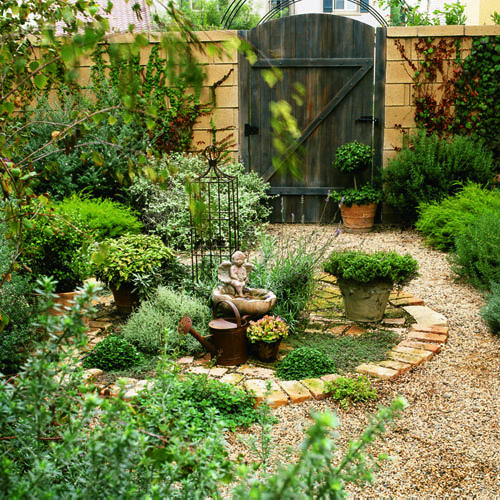
Southern California
Plant
Coastal gardeners can continue planting quick-maturing cool-season crops, including chard, leaf lettuces, radishes, and spinach. Inland, switch to warm-season crops such as beans, corn, cucumbers, eggplant, melons, peppers, summer and winter squash, and tomatoes.
Create an herb meadow by sprinkling seeds of cilantro, dill, and parsley in sunny garden beds that are close to the kitchen for easy access.
For a low-water alternative to traditional turf grass, try dune sedge (Carex pansa) or field sedge (C. praegracilis). Leave the deep green blades unmowed for a meadow, or mow for more of a lawn look.
Put in summer-blooming bulbs, such as cannas and irises, and tubers, including dahlias and tuberoses.
Maintain
Clip spent flowers from perennials such as arctotis, penstemon, and salvia to prolong their bloom.
Fertilize stone fruits, including apricots, peaches, and plums, with an organic low-nitrogen fertilizer, such as 3-12-12 with trace elements. Follow directions on the label.
Prepare your irrigation system for summer watering: Flush driplines and check for any leaks or misaligned heads. Then adjust watering times so irrigation finishes early in the morning, before the demand for morning showers.
Spread a 3-to-4-inch layer of mulch to protect plants from drought, heat, and weeds.
Protect
Combat powdery mildew by hosing off foliage in the morning several times a week to wash away fungus spores. Treat outbreaks with a formula of 1 tablespoon baking soda plus 1 tablespoon canola oil to a gallon of water.
Control ants with sticky Tree Tanglefoot Insect Barrier or traps containing boric acid.
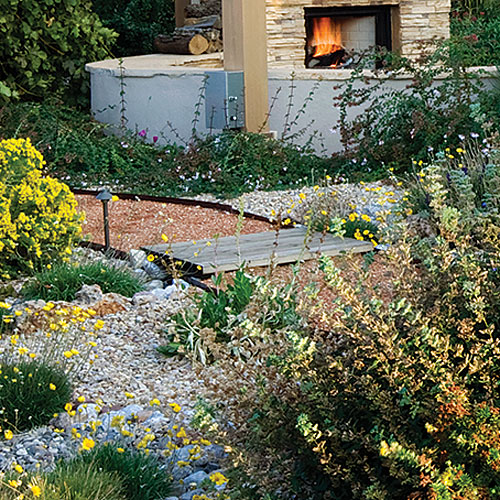
Southwest
Plant
Gardeners in the low deserts can grow tasty blackberries. The best selections for the low desert include ‘Brazos,’ ‘Brison,’ ‘Rosborough,’ and ‘Womack.’
For instant impact, plant durable barrel cactus. Try Mexican fire barrel (Ferocactus pringlei) for red spines; for yellow, go for the ever-popular golden barrel (Echinocactus grusonii).
For long-lasting color, plant low-growing native perennials such as Blackfoot daisy (Melampodium leucanthum), Sierra gold dalea (D. capitata), prairie zinnia (Z. grandiflora), trailing indigo bush (Dalea greggii), and verbena.
In the low desert, plant seedlings of artichokes, eggplant peppers, and tomatoes near the beginning of May.
Harvest
Collect the seeds of spring-flowering wildflowers to spread next year, or leave them for the birds and see what comes up in the next year.
Maintain
Replenish organic mulch on planting beds. To prevent evaporation of soil moisture, aim for a mulch layer 2 to 4 inches deep. Do not pile it around plant stems.
Prune desert trees, including mesquites and palo verdes, early in May to control their shape and size or to remove any remaining frost-damaged branches.
Divide overcrowded clumps of ornamental grasses by cutting back their tops and slicing the rootball into sections with a shovel. Transplant divisions immediately and water regularly until the grasses are reestablished.
Protect
Treat outbreaks of whiteflies with insecticidal soap. Spray the whole plant (including the undersides of leaves) every three days until the flies are eradicated.
Stop flea beetles from eating tiny holes in the leaves of young veggies by spraying plants with water in the middle of the day (flea beetles prefer dry conditions). Or use beneficial nematodes like those from Arbico Organics (arbico-organics.com) to dispatch them.
Our Favorite Basic Garden Tools
From the 2021 Gardening Issue
To read: Click on the right and left arrows at the edge of the box to turn pages; to make the text larger, click on the fullscreen icon in the lower-right corner (desktop) or in the center (mobile.)
Get one year of Sunset—and all kinds of bonuses—for just $24.95. Subscribe now!
